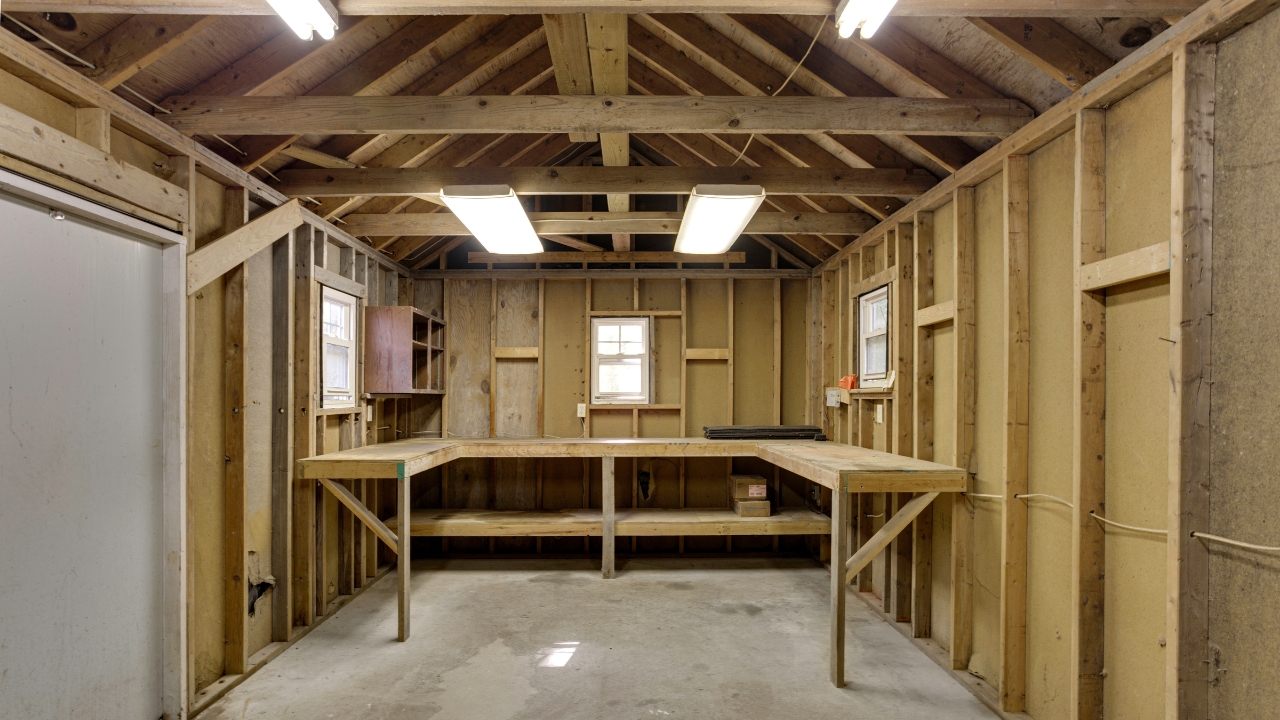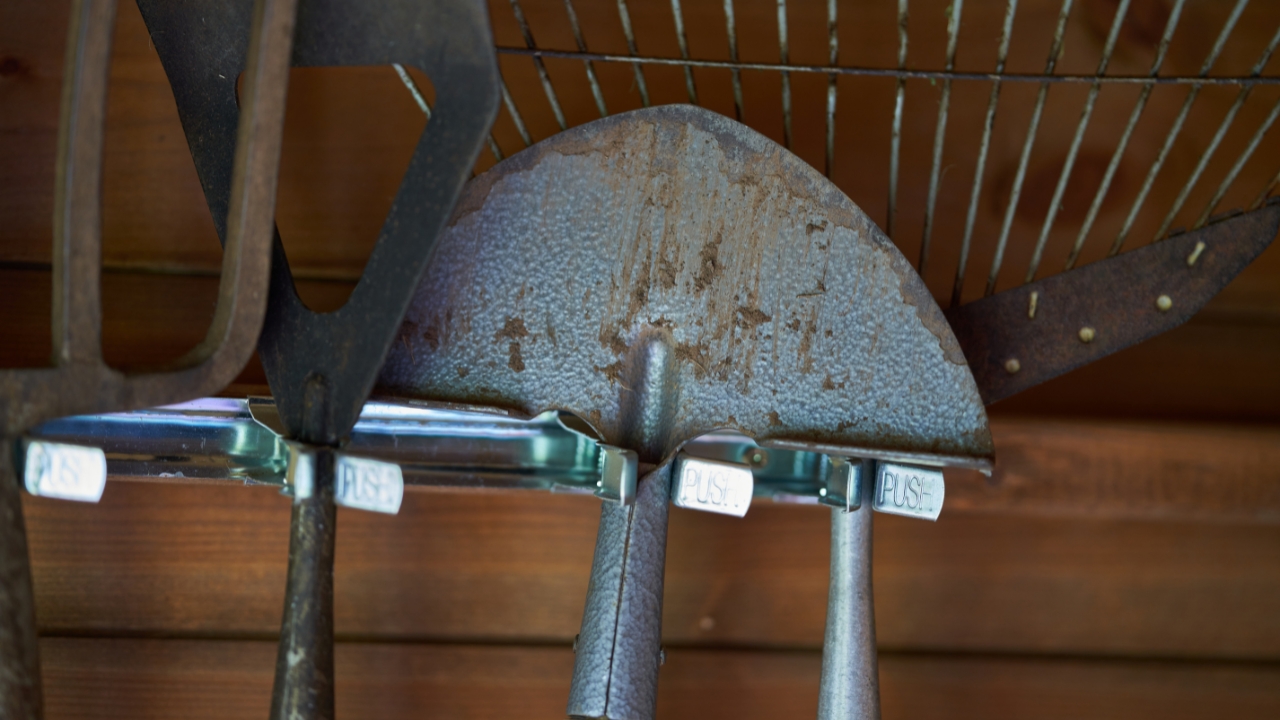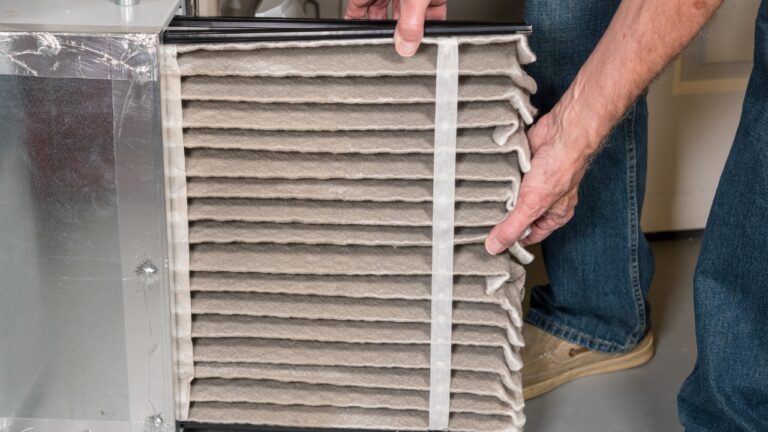What We Did to Our Shed to Make It Actually Useful
If your shed is anything like ours used to be, it probably started as a great idea and slowly turned into a dumping ground for stuff you didn’t want in the house. Lawn tools, half-empty paint cans, random buckets—it all ends up in there. But a few changes can turn that cluttered mess into a space you actually want to use.
We finally got serious about making our shed work for us, and it made a huge difference. Here’s what we did—and what you can do too—to make your shed way more useful.
Run Power to It

If you really want your shed to be more than storage, start by running electricity to it. You can use outdoor-rated conduit and make sure everything’s safe and up to code. Once there’s power, your shed becomes way more useful.
Suddenly, you can run lights, charge tools, and plug in a fan without dragging an extension cord across the yard. It’s one of those upgrades that makes the whole space feel like part of your home—not just a dark box out back.
Insulate the Walls and Ceiling

If your shed turns into a furnace in summer or a freezer in winter, insulation changes everything. You don’t need anything fancy—foam board in the walls and a radiant barrier on the ceiling is a great start.
It’ll help regulate the temperature so you’re not sweating buckets or freezing your fingers off while trying to work. Even if it’s mainly for storage, insulation helps protect what you’re keeping in there, especially during extreme weather swings.
Build a Workbench Along One Wall

Every shed needs a solid work surface. Build a simple workbench out of 2x4s and plywood. Stick it along one wall so it’s not in the way but still gives you room to spread out.
You’ll have a dedicated space for potting plants, working on projects, or even sorting through tools. Add a power strip to the back and you’re set. It’s way better than trying to work off the floor or balance things on overturned buckets.
Install Floor-to-Ceiling Shelving

Getting stuff off the floor is a game-changer. Use heavy-duty brackets and plywood to build shelves that go all the way up. You’ll be surprised how much more you can store without everything feeling crowded.
Group your items—tools, gardening supplies, seasonal bins—so it’s all easy to grab when you need it. Bonus: it cuts way down on the clutter that tends to pile up in corners or get shoved into tubs.
Hang Pegboard for Your Most-Used Tools

Pegboard isn’t just for garages. Hang a big sheet behind your workbench or on an empty wall and use hooks to keep your go-to tools front and center. Think hammers, screwdrivers, tape measures, and scissors.
Being able to see everything at a glance means you’re not wasting time digging through drawers or piles. It also makes clean-up easier, since everything has a spot to go back to when you’re done.
Use Clear Bins for Storage

Trade the mystery boxes and old cardboard for clear plastic bins. Being able to see what’s inside makes life so much easier—no more guessing games or digging through everything to find that one item.
Label them with a Sharpie and stack by category. Holiday lights, paint supplies, extra hardware—whatever you store, it’s better when you can actually find it. Plus, they stack neatly and keep moisture and bugs out.
Mount a Tool Rack by the Door

If long-handled tools are always falling over or getting tangled, mount a wall rack near the door. It keeps shovels, rakes, and brooms upright and out of the way.
You’ll open the door and be able to grab what you need without stepping over everything else. It’s a small fix, but it frees up a lot of floor space—and helps the shed feel more organized overall.
Seal Up the Gaps

Look around the doors, baseboards, and corners of your shed—if you can see daylight, bugs and dust are probably getting in. Use caulk and foam sealant to fill the gaps, and add weatherstripping around the door.
It won’t make the shed airtight, but it’ll cut down on drafts and pests. You’ll spend less time cleaning up cobwebs or chasing ants and more time actually using the space.
Paint the Inside White

A quick coat of white paint can completely change the feel of the inside. It makes everything look brighter and cleaner—and helps bounce light around if your shed has limited windows or lighting.
You don’t have to be precise. This isn’t about decorating; it’s about making the space more usable. And if you hate bugs, light paint makes it a lot easier to spot spiders and nests before they become a problem.
Give It a Clear Purpose

If your shed is full of random junk, it’s hard to keep it useful. Decide what you want it to actually be—storage? garden shed? mini workshop?—and set it up with that goal in mind.
Once you know the purpose, it’s easier to organize and get rid of anything that doesn’t belong. You’ll end up with a space that works for you, not just a catch-all that stresses you out every time you open the door.
*This article was developed with AI-powered tools and has been carefully reviewed by our editors.







